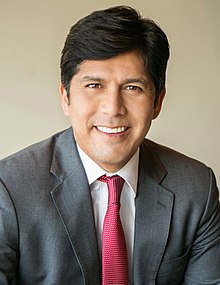
Palomar Energy Center. (Photo: San Diego Gas and Electric)
Ringside: How to Deliver Affordable Energy Again in California
California can set an inspiring example by embracing an all-of-the-above strategy to energy production
By Edward Ring, February 29, 2024 2:45 am
 Californians pay some of the highest prices for energy in the United States. Gasoline last year averaged $4.89 per gallon, and diesel fuel $5.07 per gallon, both the highest in the country. Electricity rates had California 45th in the nation in 2023 at $0.27 per kilowatt-hour, the worst of every major state with the sole exception of Massachusetts, which edged California out for the 46th spot at $0.28 per kilowatt-hour. Only in the price of natural gas was California’s performance not the worst, insofar as California’s prices were the 6th worst in the nation at $19.63 per thousand cubic feet, with the only major state that with higher prices being Florida at $25.37 per thousand cubic feet.
Californians pay some of the highest prices for energy in the United States. Gasoline last year averaged $4.89 per gallon, and diesel fuel $5.07 per gallon, both the highest in the country. Electricity rates had California 45th in the nation in 2023 at $0.27 per kilowatt-hour, the worst of every major state with the sole exception of Massachusetts, which edged California out for the 46th spot at $0.28 per kilowatt-hour. Only in the price of natural gas was California’s performance not the worst, insofar as California’s prices were the 6th worst in the nation at $19.63 per thousand cubic feet, with the only major state that with higher prices being Florida at $25.37 per thousand cubic feet.
Energy is already punitively expensive in California, but it’s likely to get worse. Achieving “net zero” emissions requires mass conversion to renewable electricity, and that process has barely begun. According to the U.S. Energy Information Agency, in 2021 (the most recent year for which we have data), Californians consumed 6.9 quadrillion BTUs of energy, yet in that same year, according to the California Energy Commission, the state only produced 0.7 quadrillion BTUs of electricity.
Isn’t the goal “net zero”? And to do that, don’t we have to electrify every sector of our economy? We’re only 10 percent of the way.
Now to be fair – don’t wander yet, this is important – electricity can deliver energy services more efficiently than combustion. “Non-thermal electricity,” delivered from solar panels into batteries and then into EVs or heat pumps, for example, may allow that total power requirement to drop significantly. Let’s assume that if we electrify everything, the improvements in efficiency will mean we can cut it in half and still have enough energy. That’s ambitious but plausible, but it still means our electricity production today is only at 20 percent of where it’s going to need to be. We will still need to produce 3.5 quadrillion BTUs per year, which in electrical terms is 115 gigawatt-years (about 1.0 million gigawatt- hours). In 2021 we generated 22.2 gigawatt-years (that’s 194,127 gigawatt-hours). As for our favored renewables, in 2021 solar contributed 33,260 gigawatt-hours, and wind contributed 15,173 gigawatt-hours.
If all these numbers are numbing, have another cup of coffee. They are the basic parameters that govern California’s path to net zero. They are immutable. They matter. To summarize the previous paragraph: The electricity produced by utility scale solar and wind energy in California in 2021 amounted to 4.8 percent of how much electricity the state is going to need if it intends to fulfill its goal of net zero. It falls short by more than 20X. And that’s probably a best case estimate.
To be sure, other acceptable energy solutions may help. Geothermal energy in 2021 added 11,116 gigawatt-hours, less than but comparable to wind. Biomass added 5,381 gigawatt-hours, and small hydro, which remains off the forbidden list at least for now, added another 2,531 gigawatt-hours. But that’s not much, and expansion potential for those solutions are limited. Fully 65 percent of California’s electricity generated in 2021 came from the bad guys – natural gas 50.2 percent, nuclear 8.5 percent, and “large hydro” 6.2 percent.
So here is the question: Can Californians rely primarily on wind turbines, photovoltaics, and batteries to generate more than five times as much electricity as they did in 2021, convert their entire transportation sector to EVs, their entire residential sector to heat pumps, induction cooktops, and electric water heaters, and work similar massive miracles to convert their commercial and industrial sectors – possibly relying on electrolyzed hydrogen (which is less efficient to generate, meaning more capacity would be required) – and keep their prices for energy to the retail and wholesale consumer competitive with the rest of America, much less the rest of the world?
The answer to that question ought to be obvious. No. California’s state Legislature, backed by every renewables special interest in the world, is embarking on an economic experiment on the backs of California’s struggling households and beleaguered businesses, and it is not going to end well. Compromise is urgently required.
Here are ten policy suggestions:
1 – Require minimum 50 percent domestic content for all energy, from gasoline to photovoltaic panels to batteries. That might stimulate a more realistic assessment of what is economically and environmentally sustainable.
2 – Revise Newsom’s executive order mandating pure EV sales of new cars by 2035 to include advanced hybrids. This will allow electric drivetrains to be paired with innovative new ultra efficient, ultra clean combustion engines, fueled with green or blue hydrogen fuel, natural gas, or gasoline. There are simply too many promising new automotive technologies to bet everything on pure EVs.
3 – Reverse existing incentives to encourage at least two types of energy to be deliverable to new residential or commercial buildings. This will improve resiliency in the face of shortages or natural disasters. It will also force competition between energy providers, lowering prices.
4 – Declare an end to the moratorium on nuclear power.
5 – Repeal CO2 emissions reporting requirements on large corporations. Under the new law, they are required to source this information from all their vendors including small businesses. It places a massive burden on all businesses for no purpose other than to produce reports. This information is not essential to formulating sound energy policy.
6 – Require the state legislature to review economic impact reports, environmental impact reports, and carbon lifecycle analysis from multiple independent sources before mandating any new energy policy.
7 – End the regulatory push to eliminate natural gas hookups, abolish VMT penalties on home builders, and make solar roofs and other “renewable” features optional on new home construction.
8 – Retrofit to the highest modern standards and technologies instead of closing California’s natural gas fueled generating plants.
9 – Increase safe, responsible drilling for oil and gas in-state.
10 – Recognize that offshore wind development is an environmental catastrophe and an economic drain, and cancel all public sector support for these projects. Redirect savings into researching potential breakthrough energy technologies.
An inherent handicap towards advocating a comprehensive new energy strategy in California is the fact that energy sectors compete with each other, as they should. The EV lobby wants to eliminate gasoline. The PV and wind lobby wants to keep natural gas around for their peaker plants, that is, until the battery lobby ramps up storage capacity, wherein they’ll want to eliminate natural gas. Most of these energy interests are either indifferent to or happy to reinforce the disparaging stereotypes surrounding nuclear and “large hydro.” And so it goes.
This innate competitive drive makes it challenging for California’s energy industry to unite behind a comprehensive policy agenda, but it shouldn’t prevent political leadership from designing an energy strategy that pushes diverse energy solutions, and the industries that provide them, into healthy competition. That’s how capitalism – as opposed to crony capitalism and monopoly capitalism – is supposed to work. The old truism is nonetheless true, when companies have to compete, the consumer wins.
California can set an inspiring example by embracing an all-of-the-above strategy to energy production. This would mean continued reliance on oil, natural gas, and nuclear power, while incorporating the highest standards possible to reduce pollution and improve efficiency. And while it would still provide for ongoing investment in renewables, it would be at a pace that spares the consumer having to pay locked-in rates on energy solutions that quickly become overpriced and obsolete.
- Ringside: The Potential of Waste-to-Energy in California - April 17, 2024
- Ringside: How Much Water Will $30 Billion Buy? - April 10, 2024
- Ringside: Sacramento’s War on Water and Energy - April 4, 2024





For the last two decades, the Legislature, the Governor, the CPUC, and the CEC ignored the warnings of people who foresaw these outcomes. As they will continue to do with the full support of the voters who think high energy costs and inflation are just random forces of nature, not the consequences of their choices.
JRR.
You nailed it!
Oil, gas and nuclear are sources of affordable energy. Affordable wind and solar is an oxymoron. I would go so far as to say that Alternative energy was never about energy at all. It is actually about the mandates, subsidies and most of all CONTROL. Every day I see news stories about electric car builders canceling plans, scaling back or going bankrupt.
EV’s are a niche product and have No place as part of an energy solution. Hybrids can work but they increase transportation costs so they also are not a solution.
Always appreciate that Edward Ring’s proposals are on the record to be reviewed and possibly adopted by future potentially sensible CA and U.S. leadership if that should become necessary.
However, once we accept the premise that the present CA Dem/Marxist govt leadership and its various special interests are simply up to no good because they have been observed by us, time and time again, to push, even mandate, destructive plans riddled with whip-lashing uncertainty rather than proposals meant to be solid and helpful to assure citizens’ future well-being, then we know that the idea of sitting down and attempting to hammer out a reasonable compromise plan with them would be ignored and perhaps also mocked for extra credit.
Part of their false premise is also that dumping traditional (cheap) energy sources is absolutely necessary to “save the planet.” But all one has to do is LOOK at the solutions proposed to know that, even if their disaster scenario were real and not entirely made up (which it is), there is absolutely no intention to “protect the planet” or its inhabitants.
Haven’t we already by now adopted enough reformative energy policy to address the basics of cleaner air, water, and energy efficiency without further caving to these people’s absurd and insane demands to continue to scramble around and sacrifice more, on the road to “freezing (and starving) in the dark?” Especially once we recognize that the goal is not what has been asserted by this crowd but is actually a Marxist-type wealth-redistribution plan that will impoverish everyone, kill who knows how many people, and undermine all human progress, entirely for the benefit of a malevolent class of wanna-be dictators who absurdly believe they are entitled to the spoils?
Mr. Ring’s proposed policies would benefit the majority of Californians? Therefore Newsom and the criminal Democrat mafia would never allow them?
Ed, congrats on a well written and thoughtful piece. A nit ” electricity can deliver energy services more efficiently than combustion.” is only true for some sources of electricity, and perpetuates the left’s “unseen uncounted” fascination with all things electric while (forgetting about the necessary infrastructure.) Further, even if possible, the ‘transition’ would be prohibitively expensive (see e.g https://eelegal.org/policy-2/#ElectrificationReport) Finally and perhaps more important, we need to get away from picking technologies, get government out of that game, and instill performance as a metric. As one example of the latter, were we to have an intensity function for CO2 emissions rather than an absolute ceiling, we might just entice companies to stay in California. That might also reduce or eliminate the problem of emissions ‘leakage’.
My point about electrification is primarily made to reinforce the point that lowering California’s total energy input by 50%, i.e., from 7 quad BTUs to 3.5 quad BTUs is an absolute best case. And even with that as the denominator, it is clear that existing solar and wind output is nowhere near where it needs to go to become our main source of energy.
That said, I’d be interested if you would share your best examples of highly efficient combustion energy applications. But nowhere in this article or elsewhere have I ever suggested we should stop developing advanced use of combustibles.
Thanks Ed, I believe we’re on the same page. We barely have enough electricity as it is, much less if we electrify everything. We’d need to triple the size of our grid (generation and transmission) if we were/are to go all electric cars. There’s other demands too. As to your request for best examples, I’d point to natural gas fired water heaters that approach 93% efficiency. Why force people to go electric water heater fed by solar/wind or anything from far away. Not directly transferable but we currently lose about 10% total from transmission; natural gas pipelines (nee transmission) lose maybe 3-4 percent.